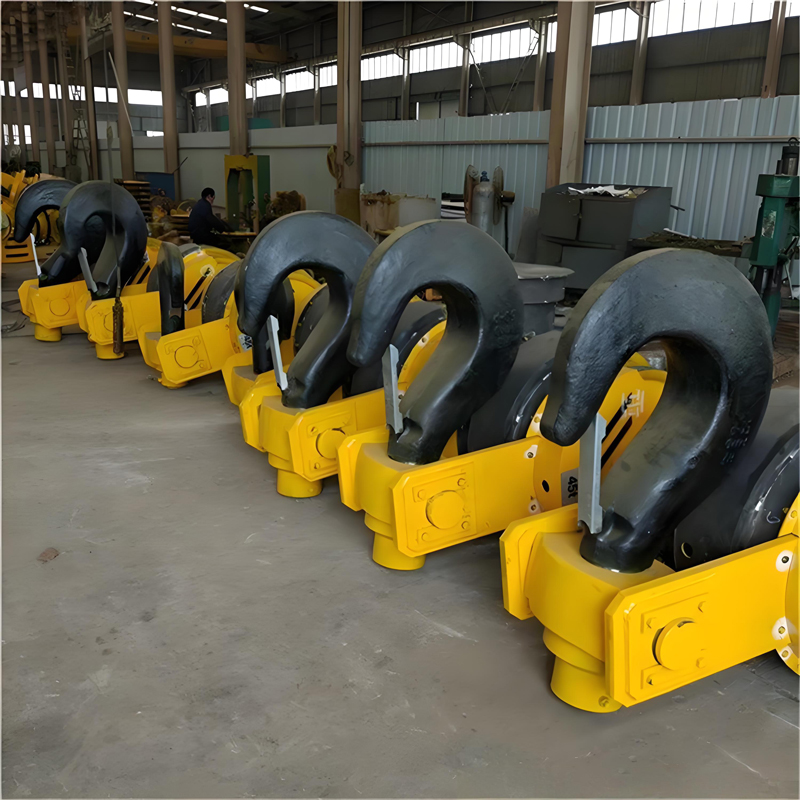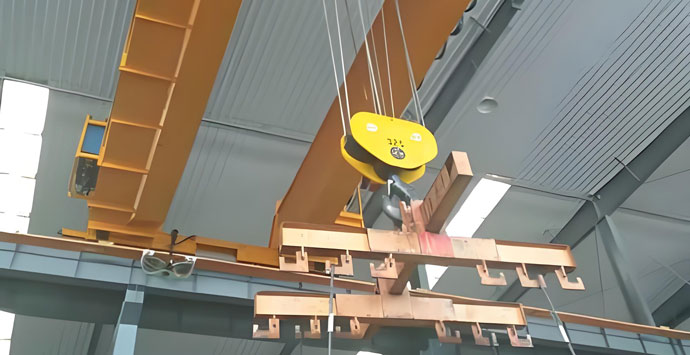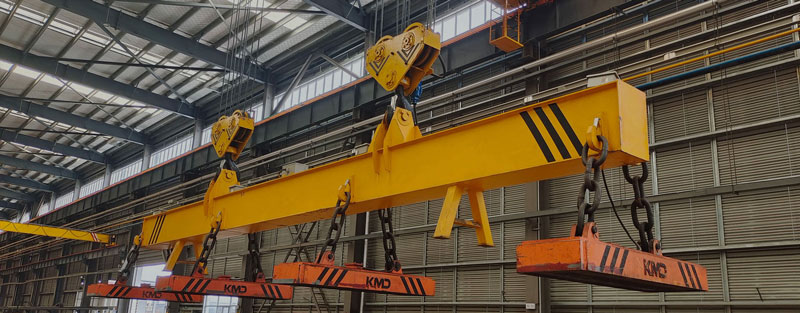Suku cadang pengganti kait kait derek
2025-08-25
Di dunia penanganan material dan angkat berat, safety is the highest priority. The crane hook is the critical interface between your crane and its load, and its safety latch is a small but vital component designed to prevent catastrophic accidents. When a latch becomes worn, damaged, or goes missing, finding the correct crane hook latch replacement parts is not just a matter of maintenance—it’s a fundamental safety requirement. This comprehensive guide will help you understand everything you need to know about selecting and replacing these essential components.

Why Crane Hook Safety Latches are Non-Negotiable
A kait pengaman hook crane is a spring-loaded or gravity-activated device that closes the throat opening of the hook. Its primary function is to prevent the load-bearing sling, rantai, or rope from accidentally disengaging (unhooking) due to motion, slack, or an off-center lift.
The consequences of a missing or faulty latch are severe:
- 1. Load Dropping: The most immediate and dangerous risk, leading to equipment damage, structural damage, cedera parah, or fatality.
- 2. OSHA Violations: Peraturan (seperti OSHA 1910.179 dan ASME B30.10) mandate that hooks equipped with latches must have the latch functioning. Operating a crane without a proper latch can result in significant fines.
- 3. Downtime and Cost: An unexpected failure leads to costly project delays and expensive repairs far exceeding the price of a simple replacement part.
Identifying When You Need Crane Hook Latch Replacement Parts
Regular inspection is key. Look for these signs that indicate it’s time for a replacement:
- 1. Visible Damage: Celah, tikungan, or significant deformation in the latch itself.
- 2. Loss of Tension: The spring is corroded, rusak, or no longer closes the latch with sufficient force.
- 3. Keausan Berlebihan: Wear on the pivot point or latch tip that affects its ability to secure the load.
- 4. Rust and Corrosion: Severe corrosion can weaken the metal, making the latch unreliable.
- 5. The Latch is Missing: Never operate a hook without its latch. Immediate replacement is required.

How to Choose the Right Replacement Latch
Not all latches are created equal. Selecting the correct crane hook latch replacement part is critical for safety and performance. Follow these steps:
- 1. Identify the Hook Manufacturer and Model: The easiest way to find a perfect match is to know the specific model of your crane hook (MISALNYA., Crosby, CM, McKissick, BENDA, dll.). This information is often stamped on the hook.
- 2. Understand the Latch Type:
- Spring-Loaded Latches: Tipe yang paling umum. Uses a spring to automatically close the latch. Requires a spring with the correct tension.
- Gravity (or Manual) Kait: These rely on gravity to swing into place. They are simpler but require the operator to manually open and close them.
- 3. Match the Size and Capacity: The replacement latch must be rated for the same working load limit (Wll) as the hook itself. Never fit a latch from a lighter-duty hook onto a heavier-duty one.
- 4. Material Matters: Ensure the replacement part is made from the appropriate grade of alloy steel and is heat-treated for strength and durability. It should match or exceed the quality of the original part.
- 5. Consider the Source: Always purchase crane hook latch replacement parts from reputable suppliers or directly from the OEM (Original Equipment Manufacturer). This guarantees quality, keterlacakan, and compliance with safety standards.

The Replacement Process: Keamanan pertama
Replacing a latch is a straightforward task, but safety is paramount.
- 1. Mengisolasi crane: Ensure the crane is completely powered down and locked out/tagged out (Jantung) to prevent any accidental movement.
- 2. Unload the Hook: The hook must be completely free of any load tension.
- 3. Remove the Old Latch: This typically involves driving out the pivot pin (clevis pin) that holds the latch and spring assembly in place. Note the order of washers and components.
- 4. Install the New Latch: Assemble the new latch, spring, and any washers in the correct order. Insert the new pivot pin and secure it with a new cotter pin or retaining clip. Never reuse old, worn pins or clips.
- 5. Function Test: Before putting the crane back into service, manually test the new latch. It should open smoothly and snap back securely into the closed position without binding.

Where to Find Quality Crane Hook Latch Replacement Parts
Sourcing the right part is easy when you know where to look:
- 1. OEM Dealers: The best option for a guaranteed fit.
- 2. Specialized Rigging and Lifting Suppliers: These distributors carry high-quality parts from major manufacturers and can often cross-reference your needs.
- 3. Industrial Supply Companies: Many large suppliers stock common replacement parts for standard hook models.
The crane hook latch replacement part is a low-cost, high-impact component that is fundamental to safe crane operation. Neglecting to replace a damaged latch is a gamble with immense risk. By performing regular inspections, understanding the specifications of your equipment, and sourcing high-quality, certified replacement parts, you protect your assets, your personnel, and your project’s success. Invest in safety—it’s always worth it.






Komentar terbaru